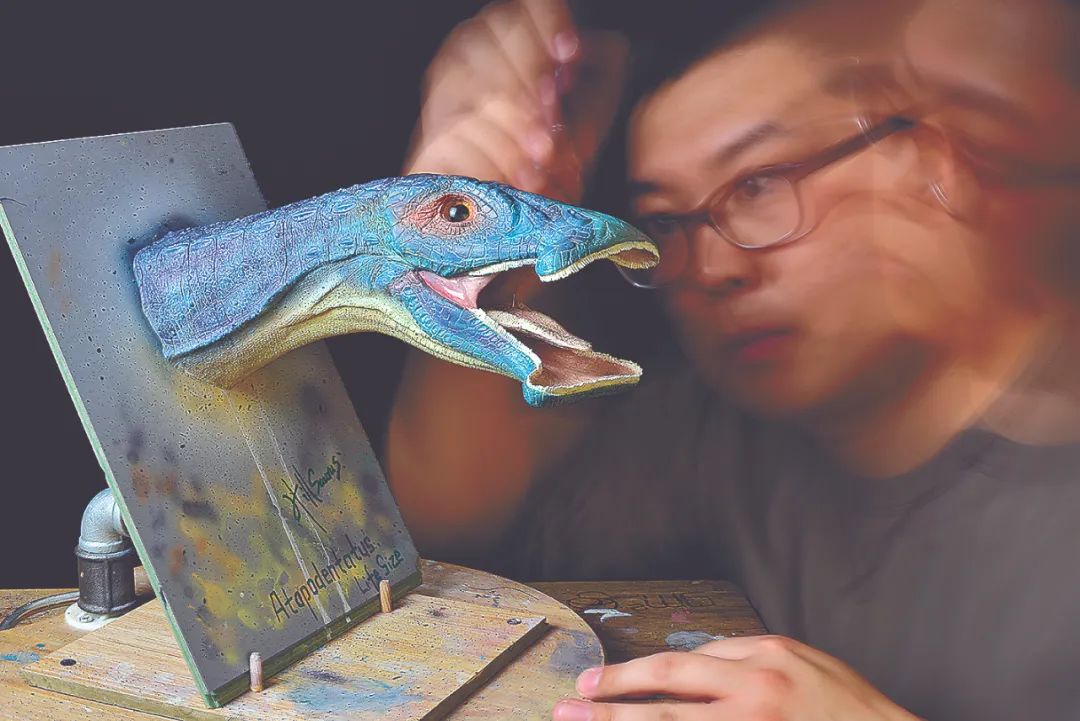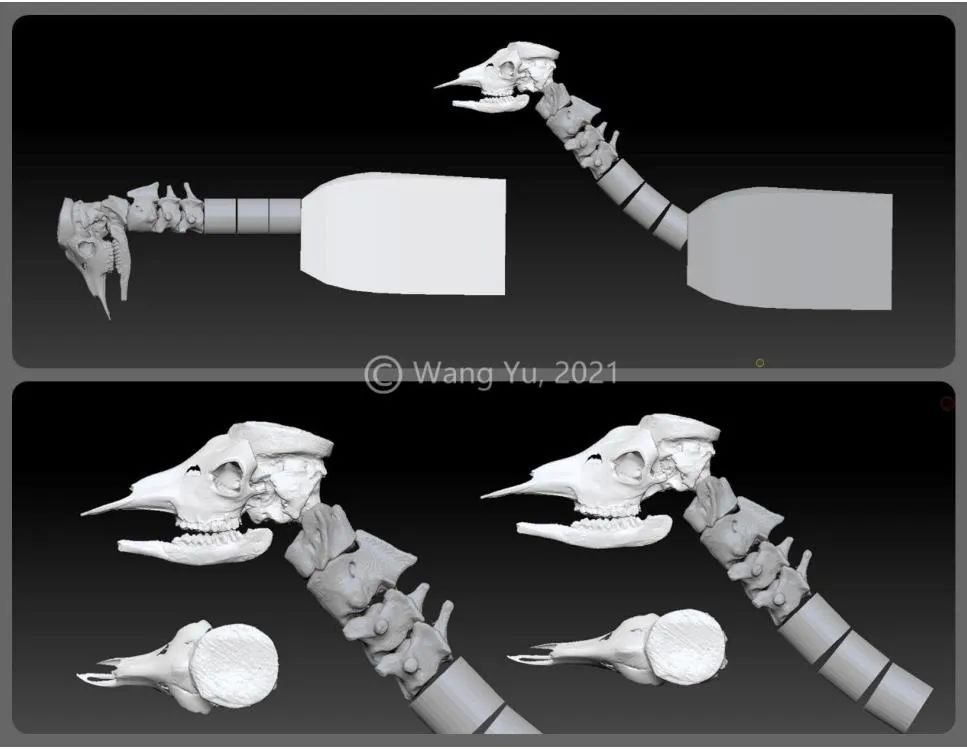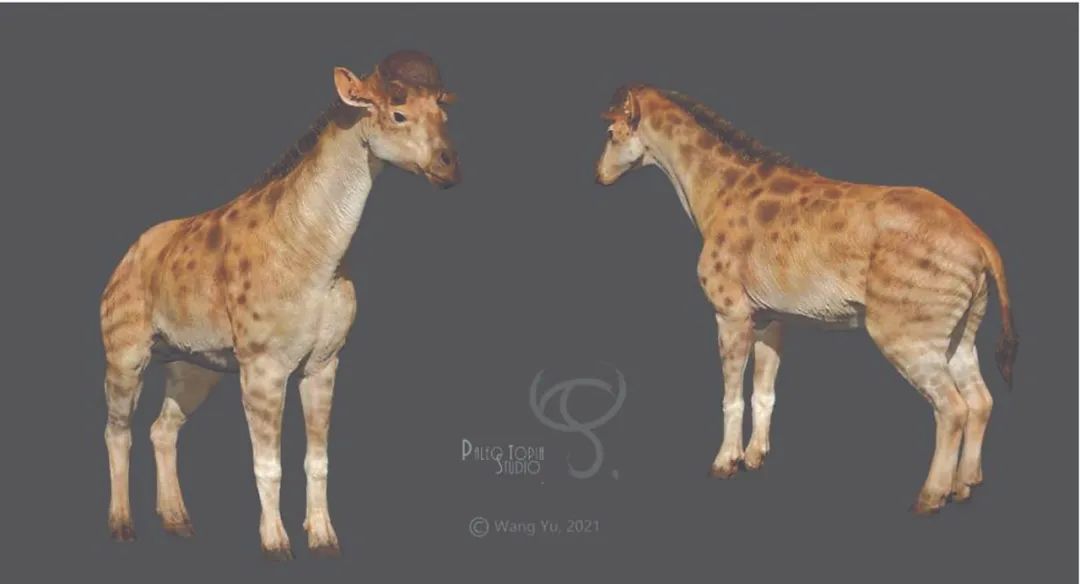How many steps will it take to restore the prehistoric giraffe?
Author:Journal of China Science Time:2022.06.26
Wen | Wang Yu

Panjiao beast recovery fixed draft
I take paleontological science and art restoration as the main direction of professional work, the reason is simple -because prehistoric life is strange, but we are strange and reasonable. These strange reasoning can be connected to each other, and each other can peek into how the network of life grows and how natural everything interacts.
Whether it is to refresh your own understanding of the form of life, or to enjoy the subversion shock brought about by the evolutionary power from the inside, or the simple psychology of hunting and exploration, it can be greatly satisfied from paleontological scientific research.
Every time, scientists put their latest fossil bones in front of me, and I couldn't control myself to outline its image in my mind.
The last time, I spent nearly 5 months recovering a "monster". It finally appeared on the "Science" magazine.
"It has a disc -shaped unicorn on its head, which is very large and flat. It is speculated that the monster is hemispherical when the monster is alive and looks like a military helmet. There is a small protrusion. "
"The cervical spine is abnormally thick, which is much thicker than the normal animal joints. We have done simulated collision mechanics research and believes that the specialization result of adapting to fierce collisions. The characteristics of unicorn and cervical spine indicate that the collision behavior often occurs. It can be judged that it is a one Good fighting characters who are good at collision. "
"It is estimated that the animal weighs about 140 kg and the shoulder height is more than 120 cm. At the beginning, we have always thought that monsters belong to the ox family. Recent research proves that the monster is the early giraffe and named the pimped in Panjiao deer."
This is the core information of the fossil specimens from Teacher Wang Shizheng, a researcher at the ancient spine, and I also got a three -dimensional scanning model of the Panjiao deer fossil specimen.
A strange cranial top, a string of cervical spine that seems to be disordered, plus the facial skeleton that has known each other, constitutes a green skull.
The simplest and rude recovery method is to fill the eyeballs directly in the eyes, close a entity along the outer contour of the skeletal, and use the decent structure to distinguish the head, neck, mouth, nose, nose, and a rough recovery image. But what fun?
I disassemble each bone, observe their connection methods, simulate the scope of the joints of the joints, and imagine the position of organ and tissue recovery. I found a problem: the cervical spine with abnormal rough cervical vertebra will invade the throat space. I tried to increase the angle between the cervical spine and the skull, but it did not improve much.
The special collision structure shows that the best impact posture is closer to the state of the long axis of the head and neck of the head, but the space that accommodates the throat in this state will be more thoroughly occupied by the cervical spine. This seems unreasonable and bug appears. After all, this is a real creature that once lived in life, not a fantasy creature that gives life through imagination.
Scientific recovery requirements Strictly refer to the specimen parameters. The three -dimensional data of skeletal fossils is the most important or even reserved structural blueprint in paleontology recovery. It is not desirable to be subjective deformation of the blueprint. In the model data, scanning of the plate corner head and the cervical spine comes from the fossil body. The contradiction should only appear on the face of the later stitching. Assuming that the facial structure can be moved forward, the space of the throat can be released.
With a question, I came to Teacher Wang Shizhen's office. He held up the corner deer fossils, compared with the skull specimen of the related existing animals, explained the structure and related information of the Panjiao deer head, and verified my assumptions. After exploring the comparison, we believe that Panjiao deer may indeed have a narrower face.

Digital Simulation Panjiao Beast collision attitude (upper left)
Anatomy (upper right) head and neck shoulder angle
Primitive facial recovery of the invasion of throat space and the original view of the original recovery skull (bottom left)
Improve the release simulation of facial recovery of the throat space and improve the recovery of the top view of the head (lower right)
After the recovery of Panjiao Deer's head, after the reasonable recovery of its bones, it was successfully completed after several adjustments. Unlike the head restoration of the climbing animals I familiar with, the outline of the soft tissue and skeletal outline of the head of mammalian heads are not fully fit, and some are even very different. There are also some keratin compositions that cannot form fossils, such as the unicorns of the hemispherical deer hemispherical. The retention on the fossil is actually a very flat bone plate, and the real horn develops on this base.
Fortunately, the existing mammalian materials for reference are still very rich, such as giraffe, Hoja, antelope, and other cattle family. Their video and anatomical materials are easier to obtain.
Comparing anatomy is often used in paleontological recovery: similar types, similar structures, the same function, similar behavior, similar environment ... There are many rules in nature, and many principles in common, such as sharks, dolphins Although the fish dragon, such as flying birds, bats and pterosaurs, although the life is different, the body is different. This is the convergence of the function and form under the natural choice.
Evaluate the rationality of a scientific recovery work. One of the interesting methods is to use objective scientific structures to assume that the real resurrection of the creature can be restored. They respond to their environment. Maybe it sounds a little fantasy, but this way of thinking helps to open multiple dimensions to evaluate the possibility of life forms at the same time.
Regarding the recovery of the body, after many revisions, we have tried two eutra types of antelope, and a version of the West Tile Beast type (a thick giraffe). Because there is no direct evidence of fossils, we mainly use the following three aspects to do restoration considerations: the coordination of animal shapes -coordination of the proportion of the head and body; the body shape of the collision -strong and stable; ——The forest land activity is more interested in short legs. Based on the above points, the shape of the Siwa Beast is considered a more reasonable possibility. However, the initial 120 cm shoulder high speculation speculated that a strange head and body ratio will be formed in recovery. Visual coordination may be the innate aesthetics of "nature" and "non -nature", "real" and "non -real", "harmony" and "non -harmony". We prefer this coordination before there is no conclusive evidence. In the end, we estimate that the shoulder height of the Panjiao deer is in the 90 ~ 100 cm interval.
A complete scientific recovery process must be from the inside out, and a professional scientific recovery work can also be appreciated by "seeing the inside".
To put it simply, the logical thinking of paleo -biological scientific ecological restoration is the bone -muscle -skin — skin derivatives -action -behavior -environmental interaction. Because they are causal and effect, the order is the same in turn. Due to the recovery image, the imperial image is static or agile.
The recovery worker will leave traces on the work on the thinking and understanding of each stage. The processing of these details is often the most intriguing, just like the painter's brushstrokes and sculptors' knife marks.
The setting of body color and spots is mainly from two aspects of consideration. First, environmental factors, drought sparse forest grassland, background color similar to today's African rare tree grassland. The color and patterns of animals are mainly used to communicate or protect on the visual level. Most mammals do not have gorgeous colors, and the types of forest land often develop with spotted patterns -this helps them hide their shapes in the mottled tree shadow. The background color of the Panjiao deer chose the protective color of the earth color system.
Secondly, the evolutionary foreshadowing is reflected in the choice of the form of the pattern: the typical mosaic geometric patterns of the giraffe and the parallel strip -shaped pattern of the Hoja hips are attracted to the element, and it is reproduced on the Panjiao deer fur. This is an artificial subjective guidance, implying the evolutionary connection.
Panjiao beast recovery fixed draft

The last restoration is the sports form. I stared at the monitor and repeatedly watched the collision video of Niuke animals in a frame. I got a fixed reference for the collision between the sheep and the musk cow: their ups and dynamic momentum, different storage, and the trend were different.
Panjiao deer, those specialized bones are destined to be a natural door -breaking device, how will it collide, how it will start, end, and what kind of force, we may always guess. In the end, I set up two sets of scenes of different collisions with the posture of Pan Sheep and Musketo. I wonder if the viewers can hear the sound of the distant world in the static restoration.
(The picture of this article is made by Wang Yu)
"China Science News" (2022-06-24 The 4th edition of the 4th edition of the original title: "Prehistoric Giraffe Refused Tong Ji")
Edit | Li Yun
Capture | Zhihai

- END -
Chongqing released the first batch of smart city application scenarios to open a list of 20 projects in the opening list

Cover reporter Cao Yu YuyanOn June 23, the cover news was learned from the press c...
Selling data cables 3.4 billion annually, from the OEM factory to the IPO, the hidden concerns of the Green Union emerged

Zhang Qingsen, who graduated from college in 2007, should not expect that he would...